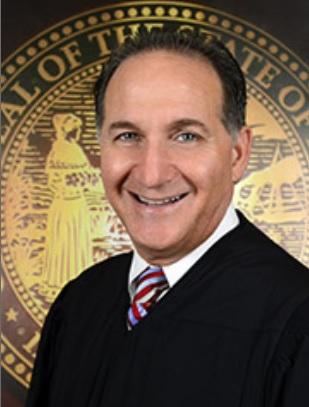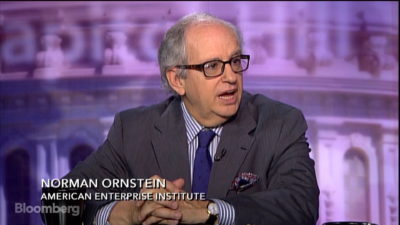
(Carol Porter/Washington Post)
True reform should begin by treating mental illnesses and substance use disorders as illnesses and not crimes.
(7-28-21) Two powerful advocates believe we are at a tipping point. The Biden Administration is directing $2.5 billion in funding for mental health and addiction programs. Calls for reducing reliance on police to handle mental health crisis calls are gaining traction. Will we seize the moment or simply pump more funds into a failed system so that it can continue to fail?
Judge Steven Leifman and frequent television commentator, Norman Ornstein, an emeritus scholar at the American Enterprise Institute, explain today’s problems and solutions in this guest blog.
A UNIQUE TIME: LET’S NOT BLOW IT
At long last, we are seeing changes in how we deal with the interaction of mental illness, substance abuse, police reform and criminal justice reform. Federal bills to provide incentives to local communities to replace police with mental health professionals in crisis calls, sponsored by top lawmakers like Senator Chris Van Hollen (D. Md.) and Representative Katie Porter (D. Ca.), (her bill) are moving in Congress. President Biden’s critical new funding for mental health and substance use treatment as part of the Covid Relief Plan is an extremely welcome, long overdue recognition of the woefully inadequate, antiquated and, in many places, virtually non-existent system for providing care for those struggling with addiction and/or serious mental illnesses.
But money alone will not solve a shameful situation that, for many decades, has festered rather than be faced, at a cost of incalculable human suffering and a massive misallocation of resources. Without a near-total overhaul of the way things are currently done, we run the risk not only of wasting critical tax dollars, but of wasting a once in a generation opportunity finally to fix our broken behavioral health system.
The good news is we know how to fix it. Even better—by focusing on the interactions between mental illness and substance use, the criminal justice system and policing, we can ameliorate three national crises at once, saving lives and saving money.
HOW TO BEGIN : Outdated Laws, Ineffective Care Models
Start with this: the country currently lacks a cohesive behavioral health system and most jurisdictions apply an outdated and ineffective model of care. Our laws governing people with serious mental illnesses and substance use disorders in both the civil and criminal justice system are more than fifty years old and do not reflect modern science, medicine, and treatment.
This misguided and ineffectual mental health and substance use system has resulted in mass incarceration in our jails, wholly inappropriately and unsuccessfully, becoming the country’s de facto mental health care system.
Almost every year, the United States garners the dubious distinction of incarcerating more people per capita than any other nation,[1] at an annual burden of over $1 trillion in direct and indirect costs[2]. Criminal justice interventions including incarceration marginally reduce crime, but they are also linked to a range of harms to individual and community health and wellbeing.[3] In a system focused more on retribution than rehabilitation, instead of re-integrating into communities, individuals have a harder time finding work and housing, and are more likely to suffer from mental and physical health concerns as a result of their incarceration.[4] Recidivism rates reflect those impediments, with over 80% of those exiting jails and prisons becoming rearrested or re-incarcerated within 9 years.[5]
WHO ARE WE LOCKING UP? 70% HAVE MENTAL ILLNESS
Now decades of research and data-gathering provide a clearer picture of who we are incarcerating.[6]
Those populations with the lowest incomes[7] and with the greatest share of trauma, are most likely to be incarcerated, yet they are the ones in greatest need of assistance and therapeutic interventions. Over 70% of individuals in jail have at least one mental illness diagnosis or substance use disorder and up to one-third of those in jail have serious mental illnesses, much higher than the rate found in the general population.[8] Individuals with a mental illnesses and substance use disorders in our jails is the norm, not the exception.

Judge Steven Leifman
Surrounded by poorly paid corrections officers untrained in mental illness, and often put in solitary confinement because of their non-compliance due to their ailments, those with mental illnesses often come out of jail in much worse shape than when they came in. And are likely to end up back in jail, or worse, in a disastrous cycle.
While the United States has 4% of the world’s population, we have 25% of the world’s inmates housed in our jails and prisons. Prior to the pandemic, 1 out of every 115 adults was behind bars and 1 out of every 38 adults was under correctional supervision.
Since 1980, the number of people in the nation’s prisons and jails has grown by nearly 500%, and length of sentences has increased significantly. A substantial share of these increases is due to untreated mental illnesses, substance use disorders and co-occurring substance use and mental health disorders.
In fact, people with mental illnesses in the United States are 10 times more likely to be incarcerated than hospitalized. Annually, more than 1.7 million people with serious mental illnesses are arrested. On any given day, approximately 380,000 people with mental illnesses are incarcerated in jails and prisons across the United States, and another 574,000 are on probation in the community. And far too many are incarcerated because of encounters with police that escalated when de-escalation would have resolved the encounters without arrest. This is particularly true of people of color with mental illnesses: they are over-represented in the criminal justice system and they are at a greater risk of dying during an encounter with law enforcement.
COST TO TAXPAYERS IS ASTRONOMICAL WITH LITTLE RESULTS
Aside from the enormous human cost of using the criminal justice system as the de facto mental health system, the fiscal impact to the government and taxpayers is astronomical, providing few if any measurable positive outcomes. Annually, our counties spend about $26 billion dollars on jails and our states spend another $63.5 billion dollars on prisons. Billions more are spent on trying to restore competency to proceed to trial for a relatively minuscule group of people with mental illnesses in our jails. Miami-Dade County, for example, currently spends $636,000 dollars per day – or $232 million dollars per year – to warehouse approximately 2,400 people with serious mental illnesses in its jail. Comparatively, the state of Florida spends $47.3 million dollars annually to provide mental health services to about 34,000 people in Miami-Dade and Monroe Counties, leaving almost 70,000 people in these two communities without access to any mental health services.
Put another way, taxpayers pay $100,000 a year for each person with a mental illness in jail, with no positive impact, but allow only $1,400 a person to treat those with mental illnesses to help them maintain stable lives and contribute to their families and communities and zero for a large number who get nothing. This makes absolutely no sense!
SHAMEFUL BECAUSE TREATMENT WORKS!
This situation is particularly shameful because treatment can work. We have a system problem more than a treatment problem. Most of the money we spend related to mental illnesses is wasted on acute care treatment provided in institutional settings such as jails, hospitals, and competency restoration facilities. In fact, most states spend far more money to incarcerate people with mental illnesses than to treat them. As the Miami-Dade County example so clearly illustrates, the system is backwards. (Watch The Definition of Insanity – PBS documentary to learn about Miami-Dade County reforms.)
True reform should begin by treating mental illnesses and substance use disorders as illnesses and not crimes.
Arrests and incarceration should be the very last resort for people with serious behavioral health issues. It should be as uncommon to arrest someone with a mental illness as it is to arrest someone with dementia or cancer. High quality care for mental health and substance use needs should be as easily accessible as treatment for other medical conditions—and if we simply redirect a large share of the money we are wasting on imprisonment, we can do so without a huge increase in spending overall.
WHERE MONEY SHOULD BE SPENT, NOT WASTED
A good start would be to develop and fund a model crisis response system for people with mental illnesses and substance use disorders just like we do with emergency rooms for people with a primary health emergency. The National Council for Behavioral Health recently published the “Roadmap to the Ideal Crisis System” a 5-year project by the Group for the Advancement of Psychiatry that details the essential elements, measurable standards and best practices for a behavioral health crisis response.
This should receive priority funding.
Next, we need to apply a population health model to the criminal justice system and not a criminal justice model to the mental health and substance use system. This means that we need to develop seamless systems of care that include effective prevention, assessment and diagnosis, crisis care as noted above, case management, medication management, psychotherapy, supportive housing, integrated treatment for co-occurring mental health and substance use disorders, meaningful day activities, and supportive employment. Effective prevention includes identifying and treating youth at-risk of developing mental illnesses and substance use disorders, particularly those with histories of serious trauma—dealing with the problems before they become tragedies. 
When possible, behavioral health treatment and primary care should be available in one location. Medical Homes (primary and psychiatric care) should be promoted around the United States.
Additionally, we should:
- Develop a coordinated criminal justice response with pre- and post-arrest diversion to treatment programs, peer support specialists and programs including Crisis Intervention Team (CIT) police programs with co-responders. For individuals needing court intervention, appropriate cases should be heard in the civil court system and not in the criminal court system. Problem-solving treatment courts only handle a small percentage of cases of those with mental illness, substance abuse disorders or both. It almost makes more sense to create specialty courts for the 30% without these disorders to treat them with a traditional criminal justice response, and to provide treatment to the remaining 70% justice involved population with these serious illnesses. One way to help fund these treatment programs would be to limit the use of competency restoration to the most serious offenses and take the savings and re-direct them to front-end, community-based prevention and treatment services. The Conference of Chief Justices and the Conference of State Court Administrators have created a Task Force to examine the state courts response to people with mental illnesses. The federal government should work closely with the Task Force to coordinate and help fund these recommended reforms.
- Create independent avenues for police officers to get treatment for PTSD and depression. Between 15% and 20% of all law enforcement officers (180,000) suffer from Post-Traumatic Stress Disorder (PTSD) compared to 3.5% of the general public. Last year more law enforcement officers died from suicide then in the line of duty. Aside from high suicide rates, law enforcement officers also have high rates of divorce, domestic violence and substance use disorders. Studies have also shown that police officers who had just come from emotionally distressful situations in the line of duty were more likely to use excessive force in subsequent service calls.
- Develop mobile health care units for rural and under-served communities to provide an array of services, including primary health, mental health, and substance use screenings. Simultaneously, provide access to entitlement benefits and insurance, housing opportunities, educational opportunities, mobile library access, and access to support groups.
- Develop Centers of Excellence in every state and the District of Columbia to deliver best practices more efficiently to the courts and providers of mental health and substance use treatment services, and to serve as technical advisors to traditional and non-traditional stakeholders of mental health and substance use services.
- Develop applications and information technology solutions to provide immediate access to live tele-health counselors for people in need of crisis care, as well as to promote service coordination and continuity of care across treatment systems.
- Develop regional mental health diversion and treatment facilities for individuals with serious mental illnesses and complex needs involved in or at risk of becoming involved in the criminal justice system, in communities where services are difficult to access or unavailable elsewhere. These comprehensive one-stop diversion and treatment facilities should offer a coordinated system of care for individuals with serious mental illnesses who are frequent and costly recidivists to the criminal justice system, acute care medical and mental health treatment systems, and chronic homelessness.
These facilities should consist of a central receiving center, an integrated crisis stabilization unit and addiction receiving facility, various levels of residential treatment, day treatment and day activity programs, outpatient behavioral health and primary care, trauma services, dental and optometry services, vocational rehabilitation, and employment services classrooms and educational spaces, transitional housing, and housing assistance, a courtroom, and space for legal and social service agencies.
- Accurately determine the number of behavioral health professionals needed to treat those in need of behavioral health care services and develop an aggressive workforce development and capacity building plan to meet the demand for services—including incentives for getting advanced training and adequate compensation for treating those with chronic serious mental illness.
FROM POLICY TO PRACTICE: ACTUALLY GETTING THESE REFORMS IMPLEMENTED
All this may sound like pie in the sky.
But there are real life examples that show reform can work. The experience of Miami-Dade County, Florida in reforming the way the criminal justice system deals with those with serious mental illnesses shows that reform done right can create partnerships instead of adversarial relationships, reduce dramatically the number of violent encounters between police and those with mental illness, reduce sharply arrests, incarcerations, police shootings, improve the mental health of police, enable many who have struggled, been homeless or cycled in and out of jail and enabled them to move toward productive lives– and save money at the same time. And it turns out that training police the right way, convincing them that there are better and safer ways to do their jobs, can change law enforcement culture and reduce police-related deaths overall.
Dealing with all of these issues—training in de-escalation, helping police with their own trauma and stress—reduces all violent encounters with police, not just those involving SMI. Miami-Dade County has over 7,600 police officers trained in Crisis Intervention Team (CIT) policing at all of its 36 police agencies. From 2010 through 2019, the City of Miami and Miami-Dade police CIT officers handled over 105,000 mental health related calls—yet during that period they made only 198 arrests. In the five years before CIT training, the City of Miami police had a total of 90 police shootings—but only 30 in the first five years following the CIT training. And over the past five years through 2019, as more police have been trained and the culture of the department changed, the number dropped to 16! As a result of the CIT program in Miami-Dade, there have been 109,704 fewer arrests to date or 300 years of fewer jail bed days at an annual cost avoidance of $29 million dollars per year.
And importantly, what people in Miami-Dade learned is that changing the way we deal with mental illnesses and substance use disorders also provides a pathway to reform more broadly the way we do policing and manage criminal justice, addressing racial disparities in the criminal justice system and reducing excessive use of force and shootings by police.
WE CAN FIX THIS INSANITY
If we take these common sense and long overdue steps, we will improve our public health and safety, save critical tax dollars and return hope, opportunity, and dignity to people with mental illnesses and substance use disorders. To do otherwise and to go back to our pre-pandemic, atrocious response to people with mental illnesses would be immoral, dangerous, irresponsible, and ridiculously expensive.
With the pandemic spotlighting the need for a more deliberate and focused approach to the delivery of mental health and substance use treatment services, and with tragedies every day involving mass shootings, police violence, and more, the call to action has never been more urgent. We know what works. We have lacked the political will and an opportune time to act in the past. The pandemic gives us that once in a lifetime chance to act to create a new vision for mental health and substance use treatment.
Let’s not waste these critically new federal dollars and let’s make sure they are spent wisely and effectively.
ABOUT THE AUTHORS: Steven Leifman is an associate administrative judge for the Eleventh Judicial Circuit in Miami-Dade County Florida. Norman Ornstein is an emeritus scholar at the American Enterprise Institute. He lost a son to mental illness.
footnotes:
[1] https://www.prisonstudies.org/highest-to-lowest/prison_population_rate?field_region_taxonomy_tid=All
[2] https://joinnia.com/wp-content/uploads/2017/02/The-Economic-Burden-of-Incarceration-in-the-US-2016.pdf
[3] https://www.americanactionforum.org/research/the-economic-costs-of-the-u-s-criminal-justice-system/
[4] https://www.healthypeople.gov/2020/topics-objectives/topic/social-determinants-health/interventions-resources/incarceration
[5] https://www.bjs.gov/content/pub/pdf/18upr9yfup0514.pdf
[6] See: https://store.samhsa.gov/sites/default/files/d7/priv/pep19-screen-codjs.pdf; pp. 1.
[7] https://www.brookings.edu/research/work-and-opportunity-before-and-after-incarceration/
[8] See: https://store.samhsa.gov/sites/default/files/d7/priv/pep19-screen-codjs.pdf; pp. 1.



